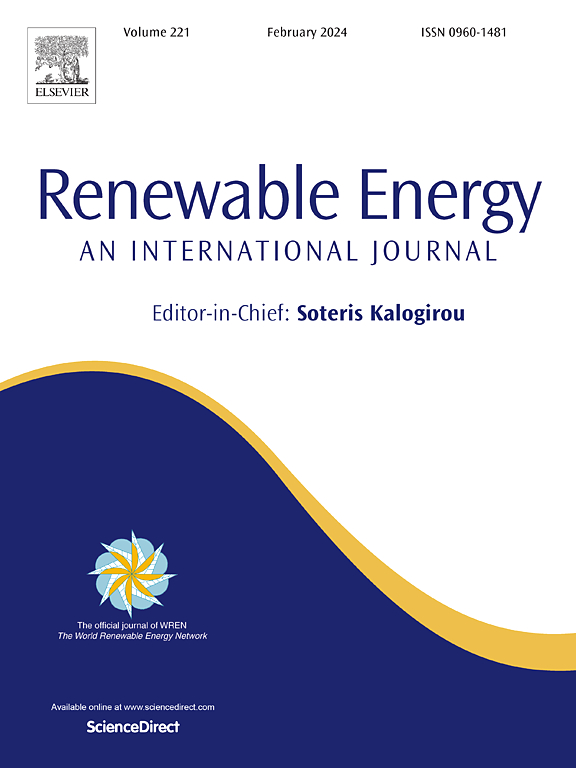Effectiveness of un-decimated wavelet transform in time-series forecasting: A PV power calculation case study in BTU
IF 9.1
1区 工程技术
Q1 ENERGY & FUELS
引用次数: 0
Abstract
This study explored the effectiveness of Un-Decimated Wavelet Transform (UWT) in time-series applications, using photovoltaic (PV) calculation as a case study. Real-time measurements of irradiance, ambient temperature, module temperature, and humidity were collected at 5-min intervals from a 1.2 kW rooftop PV system at Bursa Technical University. Wavelet-based features extracted with both UWT and the conventional Discrete Wavelet Transform (DWT) were combined with regression and tree-based learners to build 16 hybrid models. The results show that the shift-invariant UWT significantly improves both feature extraction and prediction accuracy compared to the DWT approach. The UWT–DT model achieved the highest accuracy, with the lowest MSE (0.0001), the lowest RMSE (0.0118) and the highest R2 coefficient (0.9986). A Wilcoxon signed-rank test applied to paired RMSE values confirmed that these improvements were statistically significant ( value < 0.05 for UWT-DT vs DWT-DT). In terms of computational complexity, the 'à trous' algorithm used in UWT requires convolution operations at every level, resulting in higher processing costs than DWT (12 ms feature extraction per 1024-sample input). However, the full-resolution features provided by UWT significantly reduced the error rates of tree-based models, raising R2 above 0.99.
非抽取小波变换在时间序列预测中的有效性:以BTU光伏发电计算为例研究
本研究以光伏(PV)计算为例,探讨了未抽取小波变换(UWT)在时间序列应用中的有效性。在布尔萨技术大学的1.2 kW屋顶光伏系统中,每隔5分钟收集实时测量的辐照度、环境温度、模块温度和湿度。将UWT和传统离散小波变换(DWT)提取的小波特征与回归和基于树的学习器相结合,构建了16个混合模型。结果表明,与DWT方法相比,平移不变UWT显著提高了特征提取和预测精度。UWT-DT模型精度最高,MSE最低(0.0001),RMSE最低(0.0118),R2系数最高(0.9986)。对配对RMSE值进行的Wilcoxon sign -rank检验证实,这些改善具有统计学意义(p值<;UWT-DT vs DWT-DT为0.05)。在计算复杂性方面,UWT中使用的“特罗斯”算法需要在每个级别进行卷积操作,导致处理成本高于DWT(每1024个样本输入提取12 ms特征)。然而,UWT提供的全分辨率特征显著降低了基于树的模型的错误率,使R2高于0.99。
本文章由计算机程序翻译,如有差异,请以英文原文为准。
求助全文
约1分钟内获得全文
求助全文
来源期刊

Renewable Energy
工程技术-能源与燃料
CiteScore
18.40
自引率
9.20%
发文量
1955
审稿时长
6.6 months
期刊介绍:
Renewable Energy journal is dedicated to advancing knowledge and disseminating insights on various topics and technologies within renewable energy systems and components. Our mission is to support researchers, engineers, economists, manufacturers, NGOs, associations, and societies in staying updated on new developments in their respective fields and applying alternative energy solutions to current practices.
As an international, multidisciplinary journal in renewable energy engineering and research, we strive to be a premier peer-reviewed platform and a trusted source of original research and reviews in the field of renewable energy. Join us in our endeavor to drive innovation and progress in sustainable energy solutions.
 求助内容:
求助内容: 应助结果提醒方式:
应助结果提醒方式:


